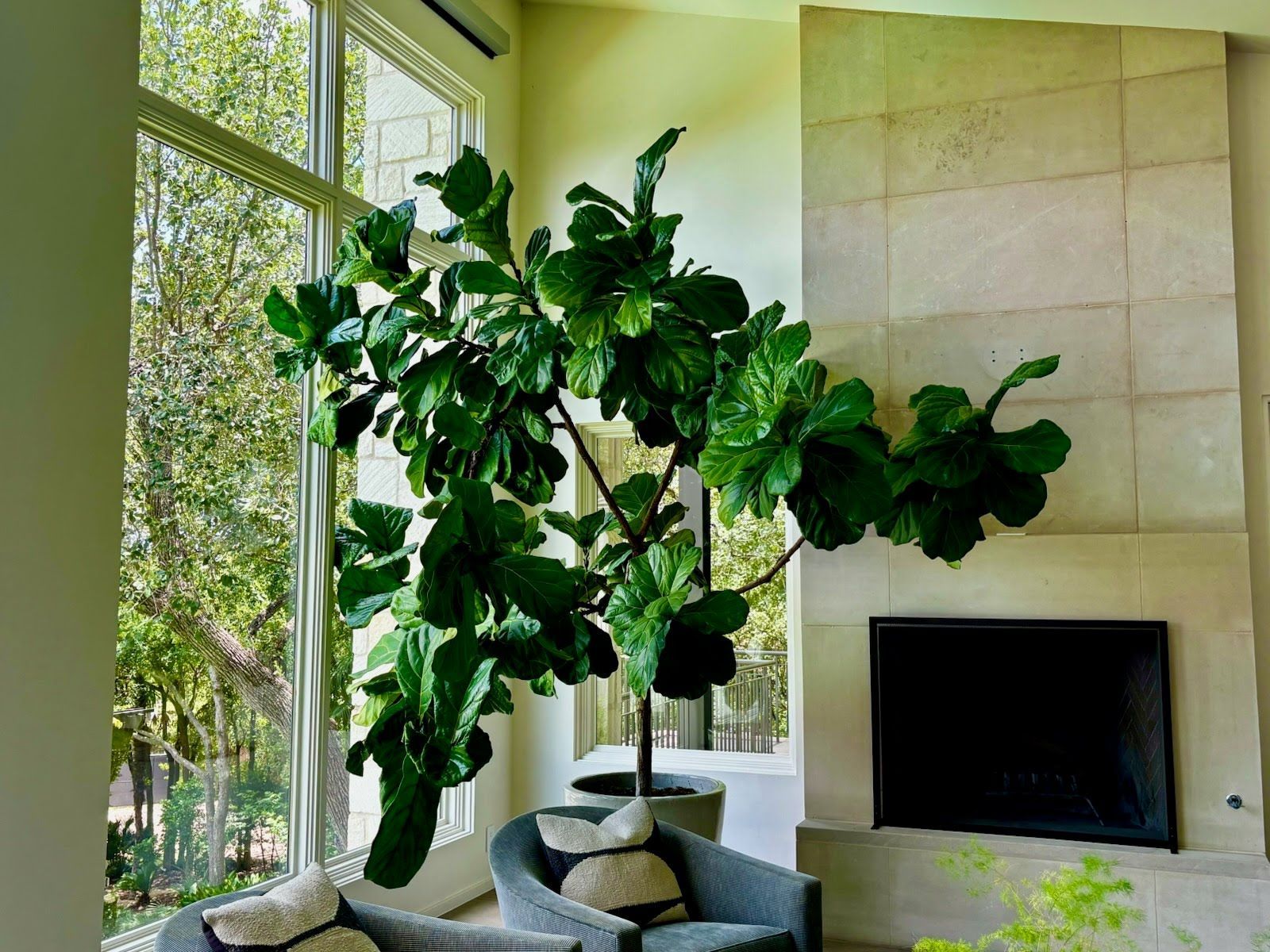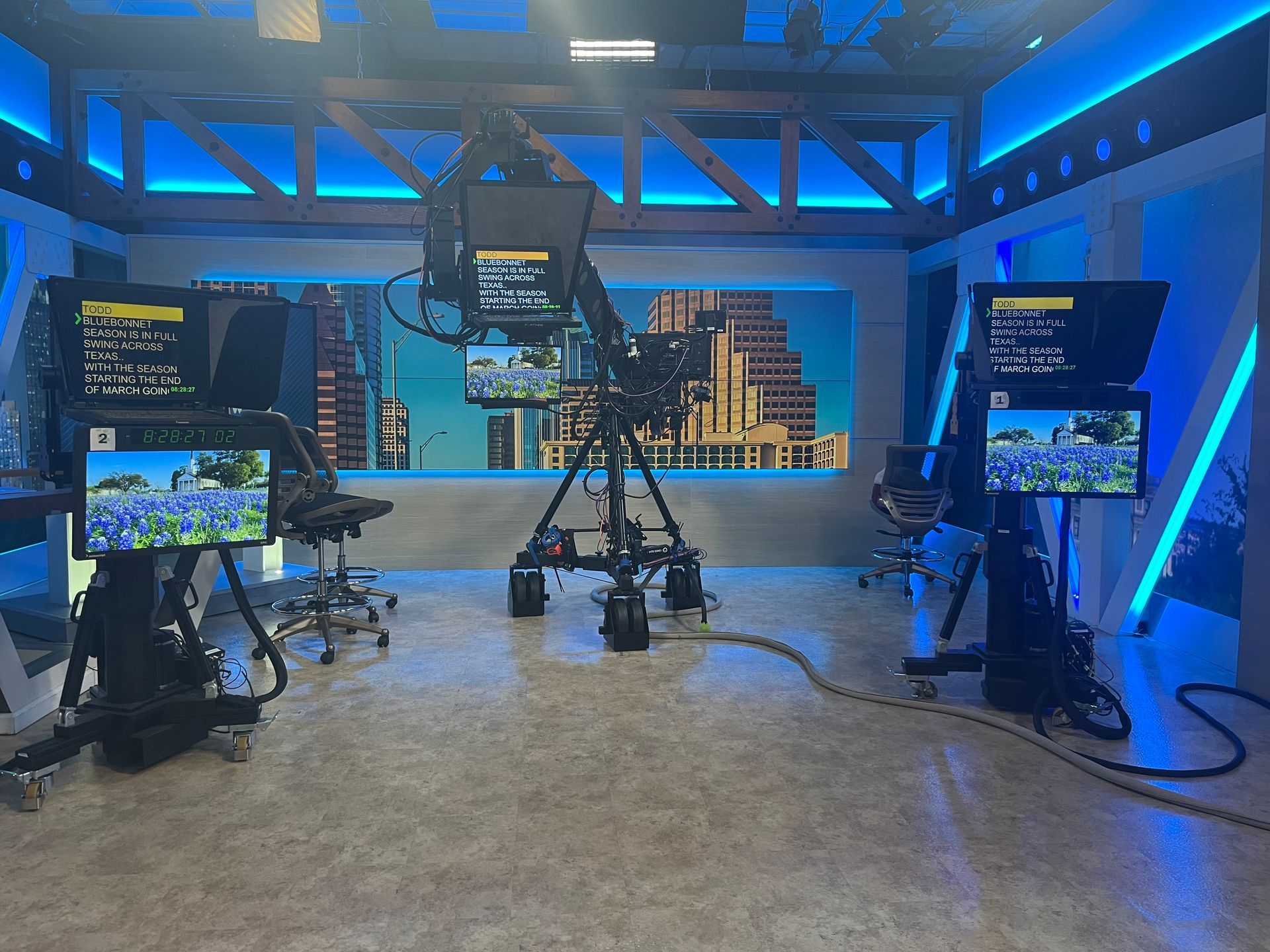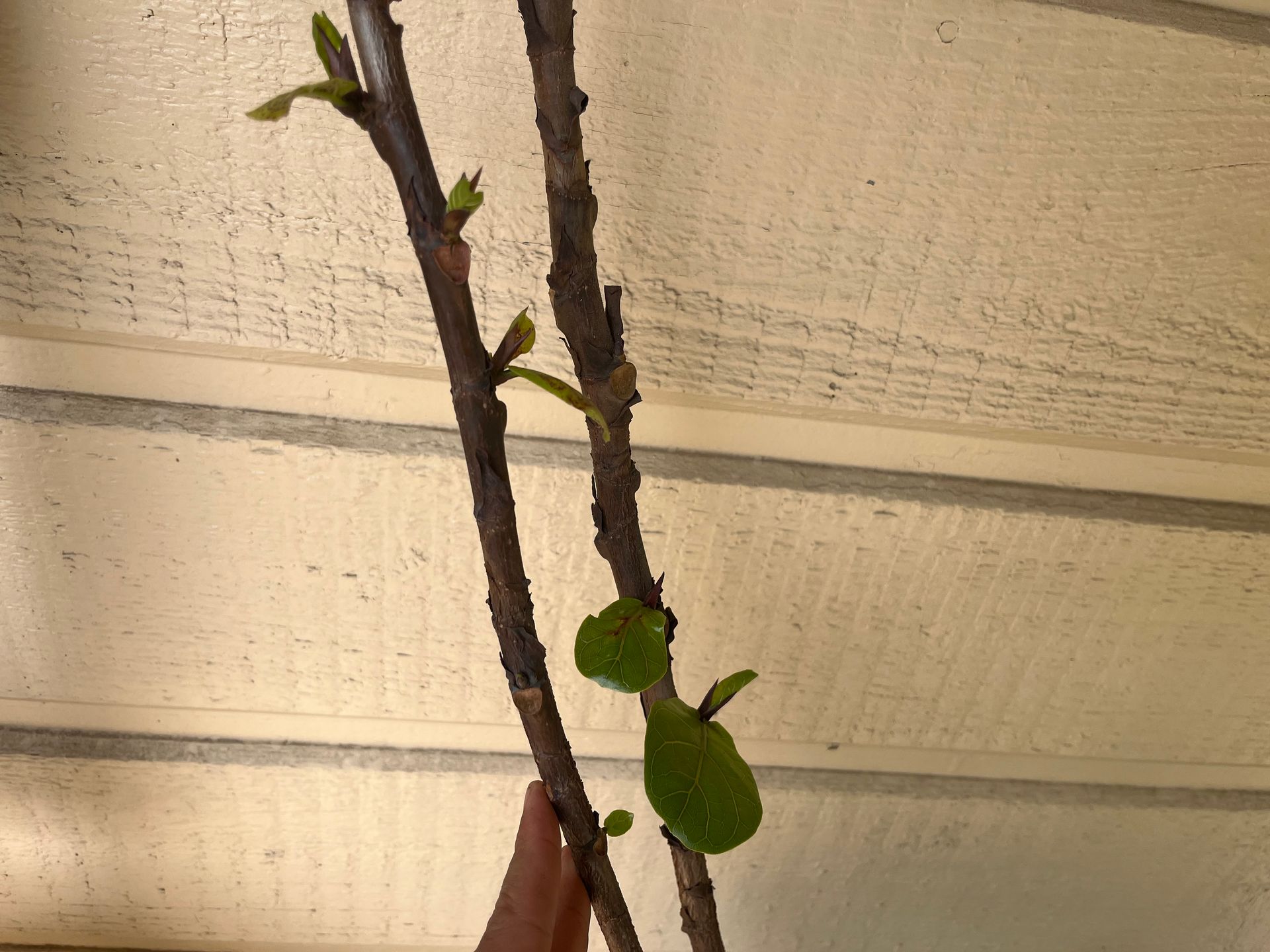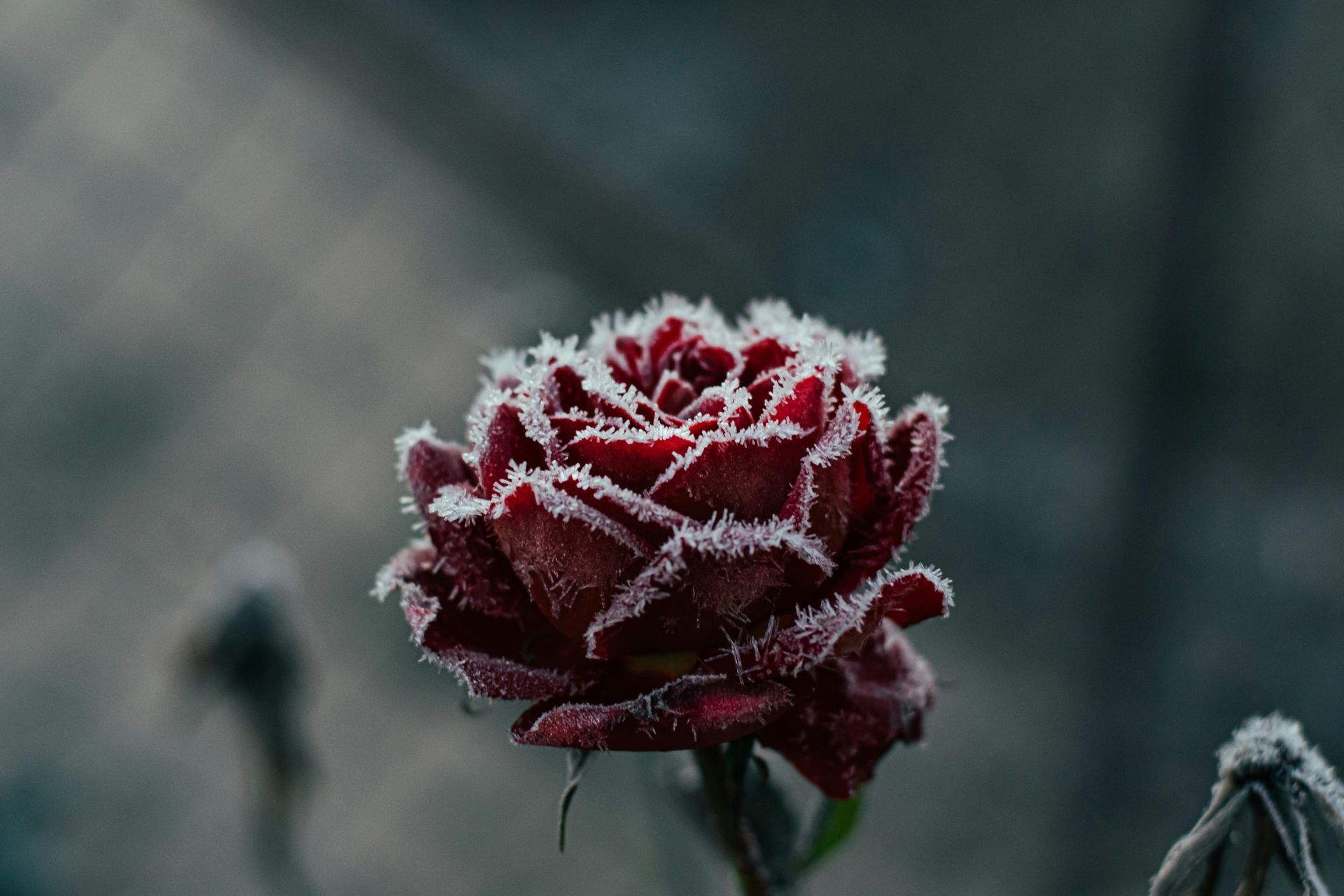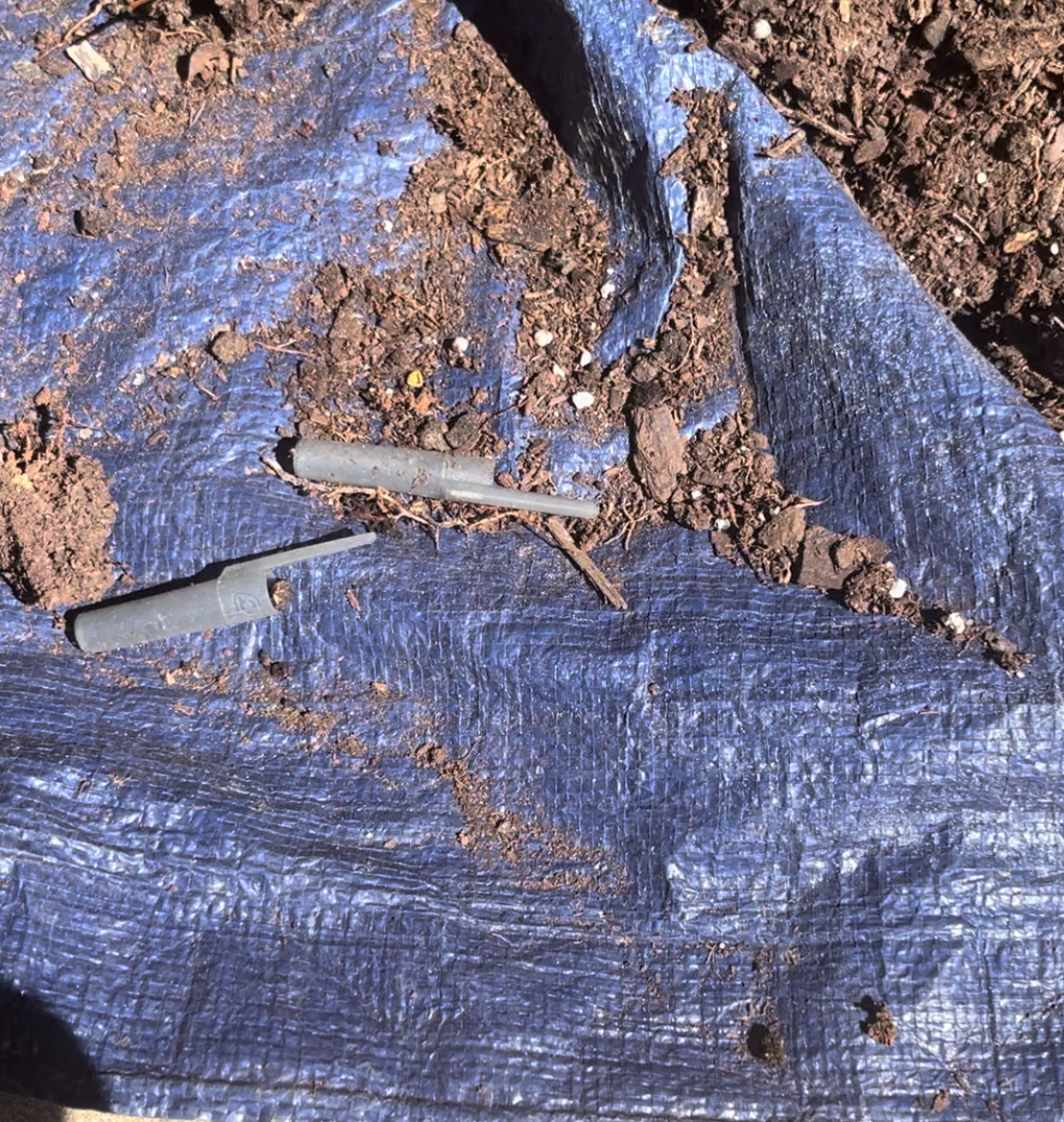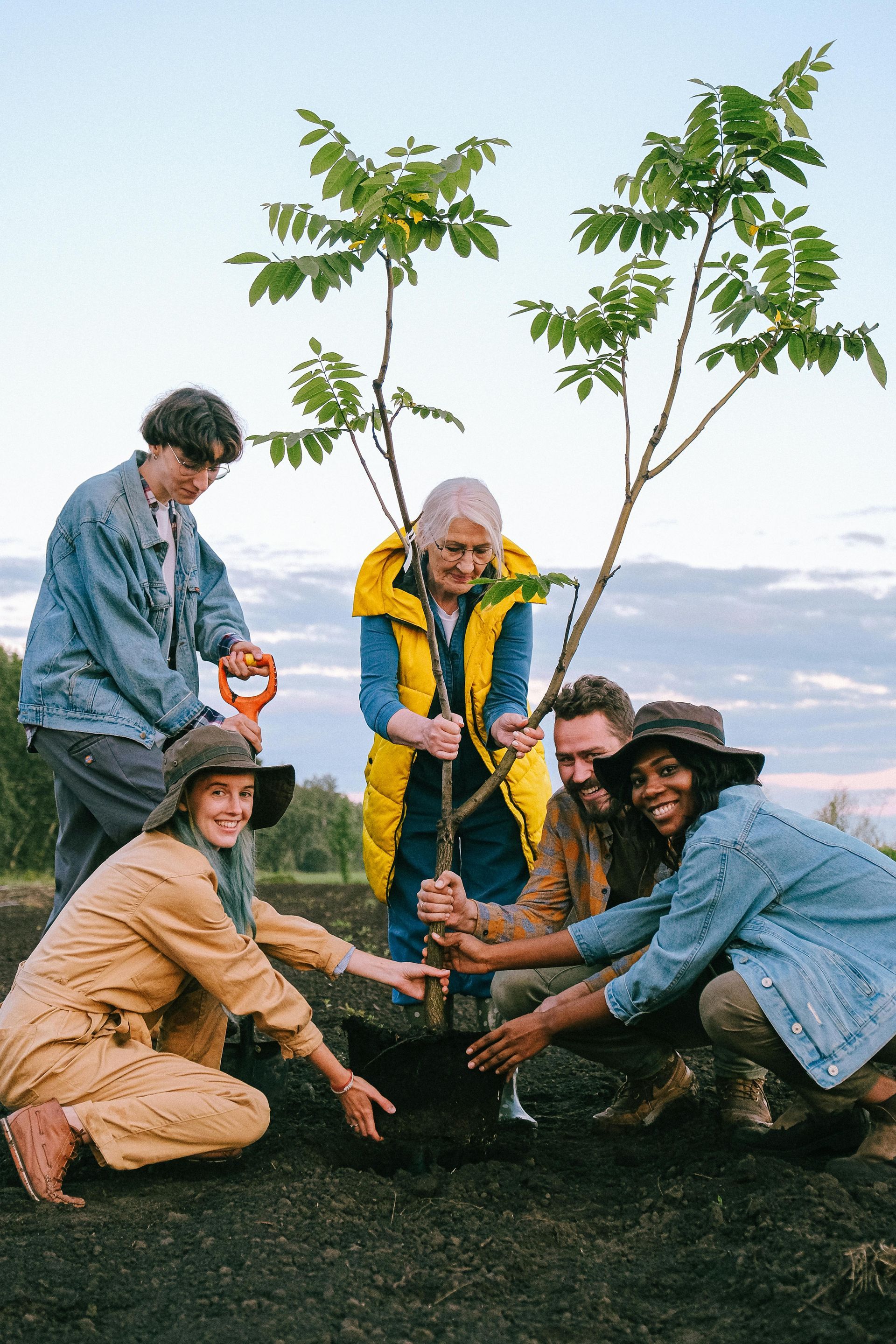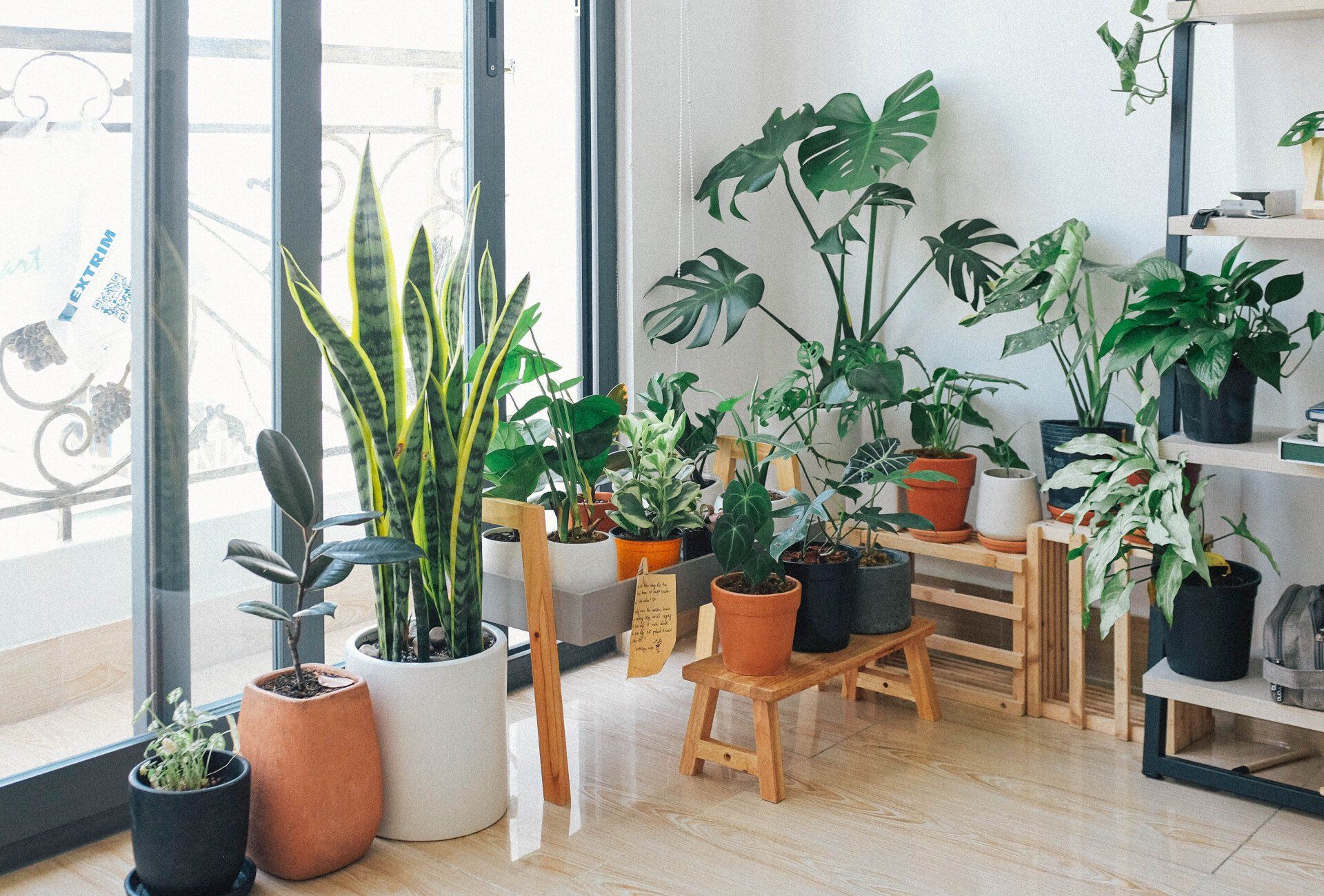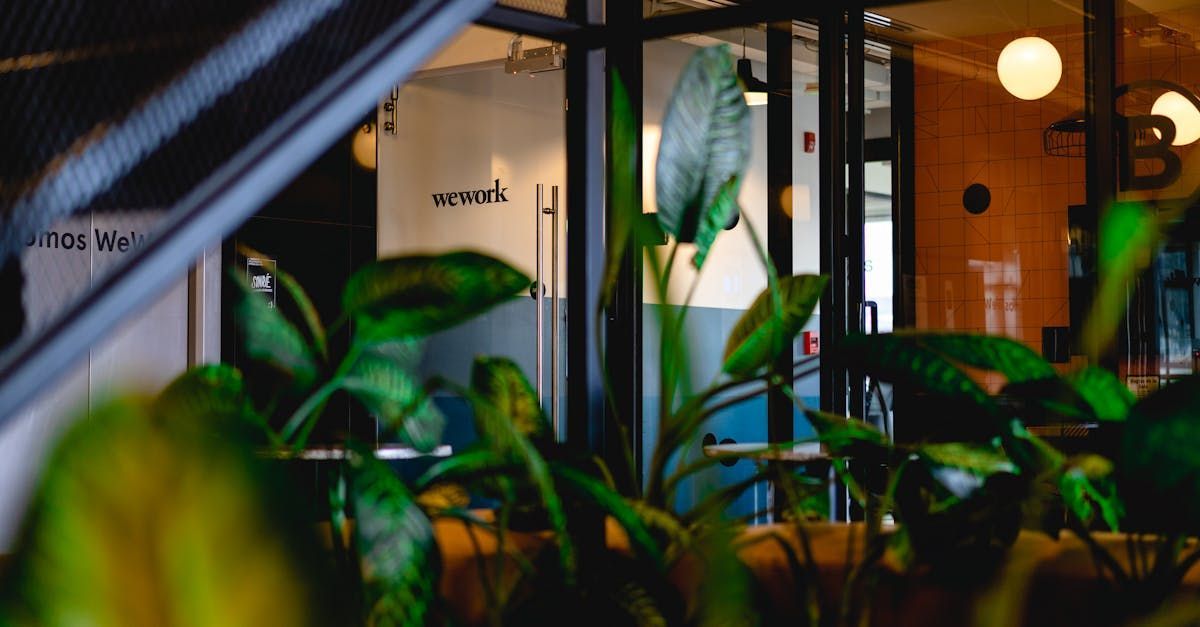Installing Indoor Plants Guide
Step by Guide to Installing Indoor Plants

Installing plants in an indoor planter instantly makes a space feel alive. This is a blog post about how Austin Plant Doctor teamed up with a client to turn an indoor planter with soil, a skylight, and a lot of potential into an indoor tropical paradise.
These are materials you'll need to install plants indoors:
- A small hand trowel. For mixing soil and digging holes for plants in the soil.
- A tarp. Lay this out on the ground near where you'll work, or you'll make an even bigger mess.
- A broom, and hand vacuum: To clean up whatever gets around the tarp.
- Gloves. To protect your hands.
- Garden shears. For cutting open pots and pruning roots.
- Plants. This is a whole blog post on its own.
- SuperThrive, Liquid Seaweed, and a balanced houseplant fertilizer. For transplant shock
As always, this project was done with input from the client, and we worked together to design and build something lush, full, easy to care for, and beautiful. If you want help filling your home with living plants in alignment with your particular needs, wants, and budget, you can contact us for a free quote.
How to choose the best indoor plants
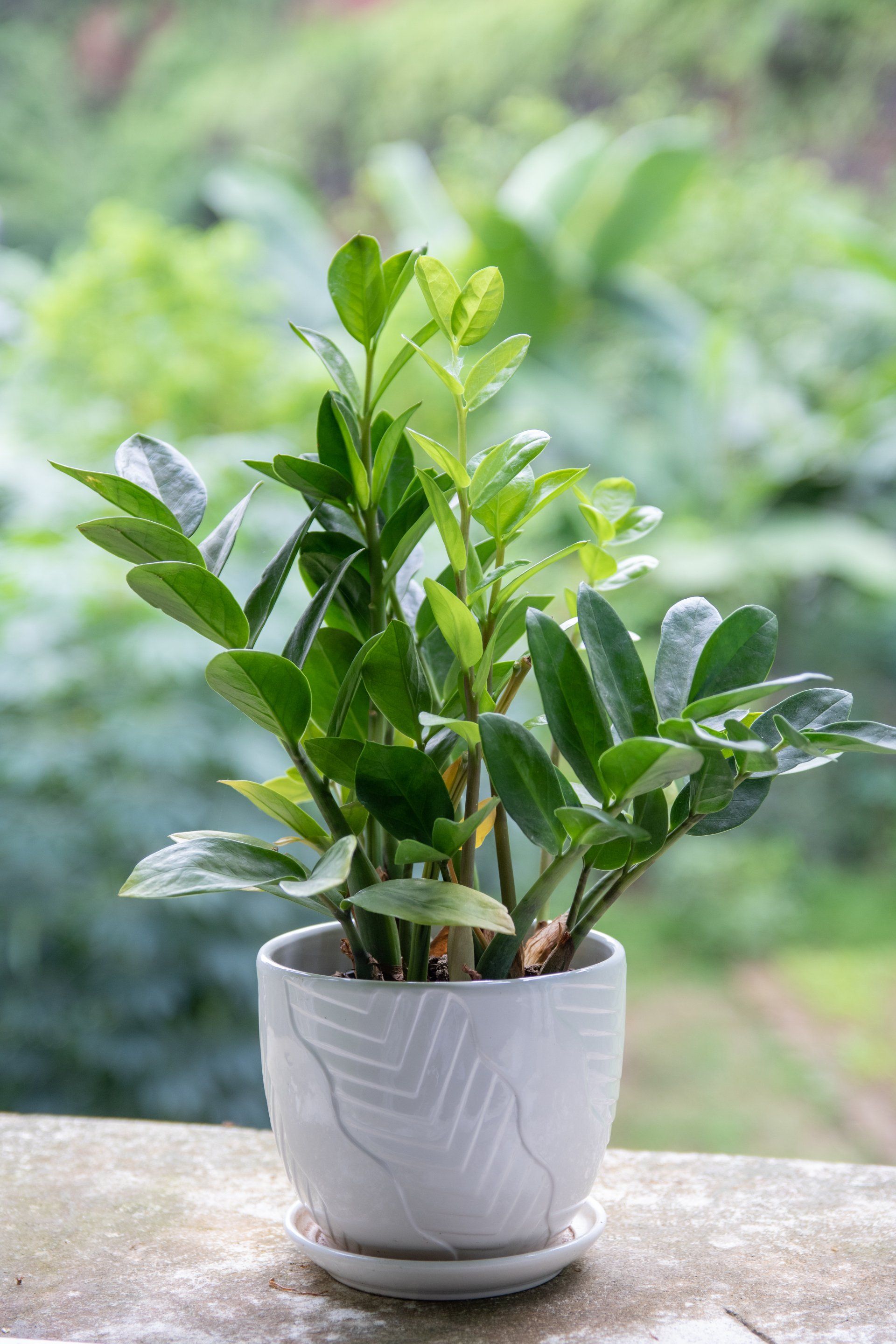
This particular client requested easy-care, low fuss houseplants, so we went with a tried and true low-maintenance selection of plants. ZZ Plants and Snake Grass are the easiest plants to grow indoors. They are drought and low-light tolerant, which is essential for planting in the areas of the planter that get less light. Plants such as bird of paradise and monstera deliciosa grow larger and faster, they just need more light. Selecting these easy to care for houseplants allowed us to create a planter that had a variety of shapes, textures, colors, and heights.
We ended up choosing a staggered design, where shorter and slower growing plants were in the front of the planter, which gets less light. Larger, faster growing plants went in the back of the planter, which received more light thanks to a skylight directly overhead. This created a "stepped" approach, where the height of the plants gradually rose towards the back.
Where to Put Plants Inside
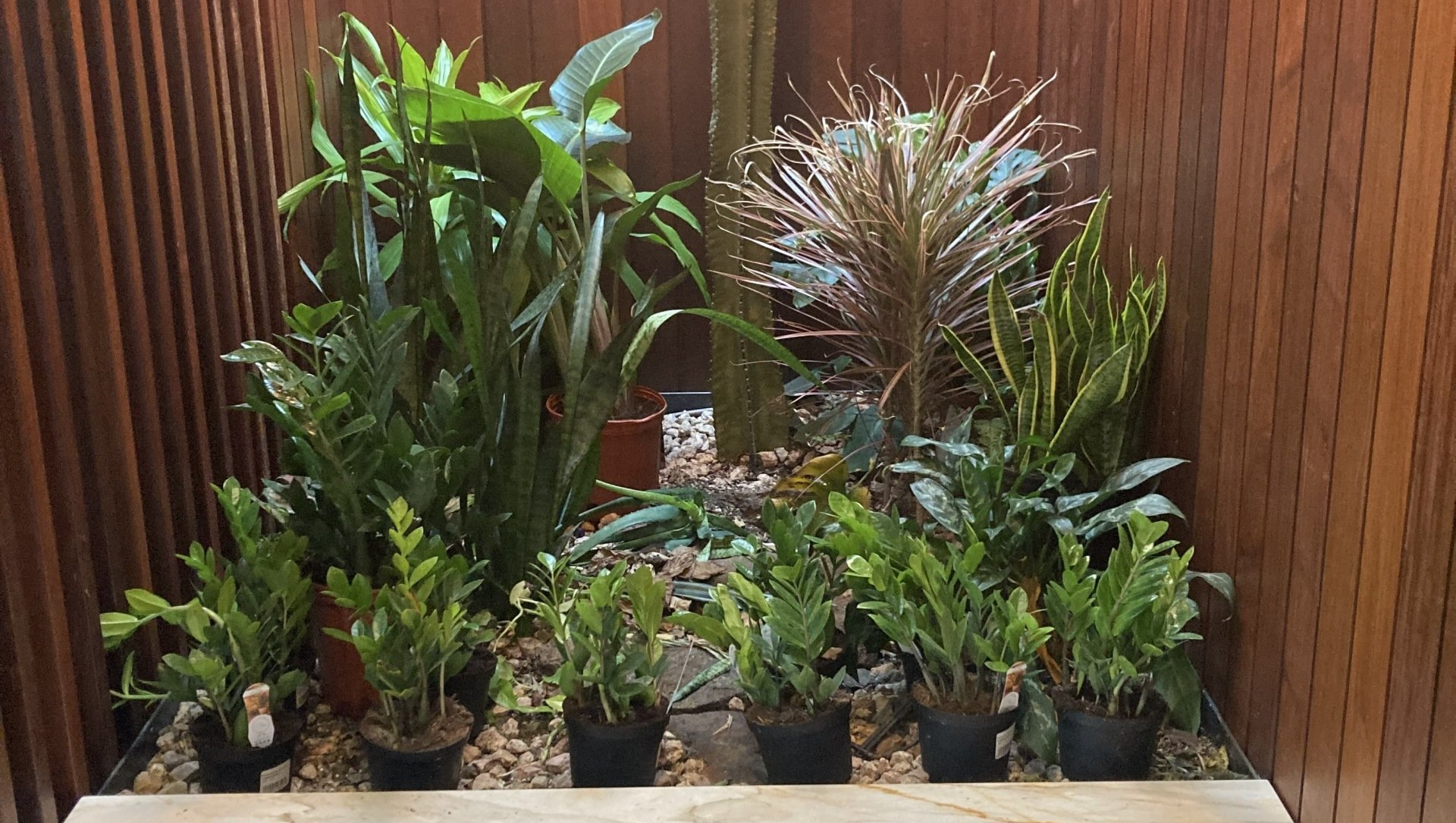
Lighting, not aesthetic considerations is the primary determinant of where to put your plants inside. Plants need light, and different species of plants need more or less light. A plant cannot survive inside without enough light for its needs. This is a fundamental rule of nature, not just interior plant design.
This planter is the first thing visitors see when entering the client's home. Designing a good looking planter for the home's first impression that was still low maintenance and long-lasting took a lot of work. Fortunately, that's just what we do here at Austin Plant Doctor!
ZZ Plants and Snake Grass are low light-tolerant, which is essential for the areas of the planter that were in the front. The areas in the back needed to be tall enough to be visible, and fortunately had an increased amount of light thanks to a skylight directly above which did not cover the whole planter.
In the photo above, you can see this philosophy in action. The small ZZ plants are in the first row, with space for them to grow as they mature. Taller ZZ Plants and a snake grass are in a the middle, creating a stepped look with a variety of leaf shapes. A bird of paradise is in the back, near the cactus which is sure to grow tall beautiful and leafy thanks to the increased light from the skylight.
Installing Plants in an Indoor Planter

Once the plants were in place it was time to get dirty! All of the plants have been lovingly removed from their pots and placed into the soil of the planter in this photo, along with a few additional ZZ plants. This involved laying down a tarp in front of the planter to control the mess as much as possible. The planter had a layer of rocks at the top of the soil, so the small hand trowel was helpful in removing them. Then, the plants (now removed from their pots) went into a trench dug into the soil. We loved seeing more and more happy plants go into their new home as the project took place over multiple plant visits. We placed a row of short snake grass stalks between the short and tall ZZ plant layers, and also placed multiple monstera deliciosa plants in the back of the planter which are sure to grow big, happy, and leafy as time goes by. The biggest challenge of the whole process was not stepping on established plants or bumping into a chandelier overhead while working in the back of the planter.
After each visit (about a week apart), the plants got a thorough drink (enough to soak the soil) with water and a mixture of SuperThrive, Liquid Seaweed, and Fertilizer, to help reduce transplant shock. Moving is a stressful process for everyone, and this formula has helped many a plant under the Plant Doctor's care.
Unfortunately, the cactus present in the planter was already dead by the time this project began. It simply wasn't compatible with the lighting and watering needs of the space. We replaced it with monstera deliciosa, which is more forgiving of overwatering and interior lighting conditions. Moving the dead cactus required gloves, please make sure you wear sturdy gardening gloves on a project like this - especially when working with thorns! This is why selecting the right plants for the right spots before work begins is so important, and why we take it so seriously.
Care and Maintenance for Indoor Plants
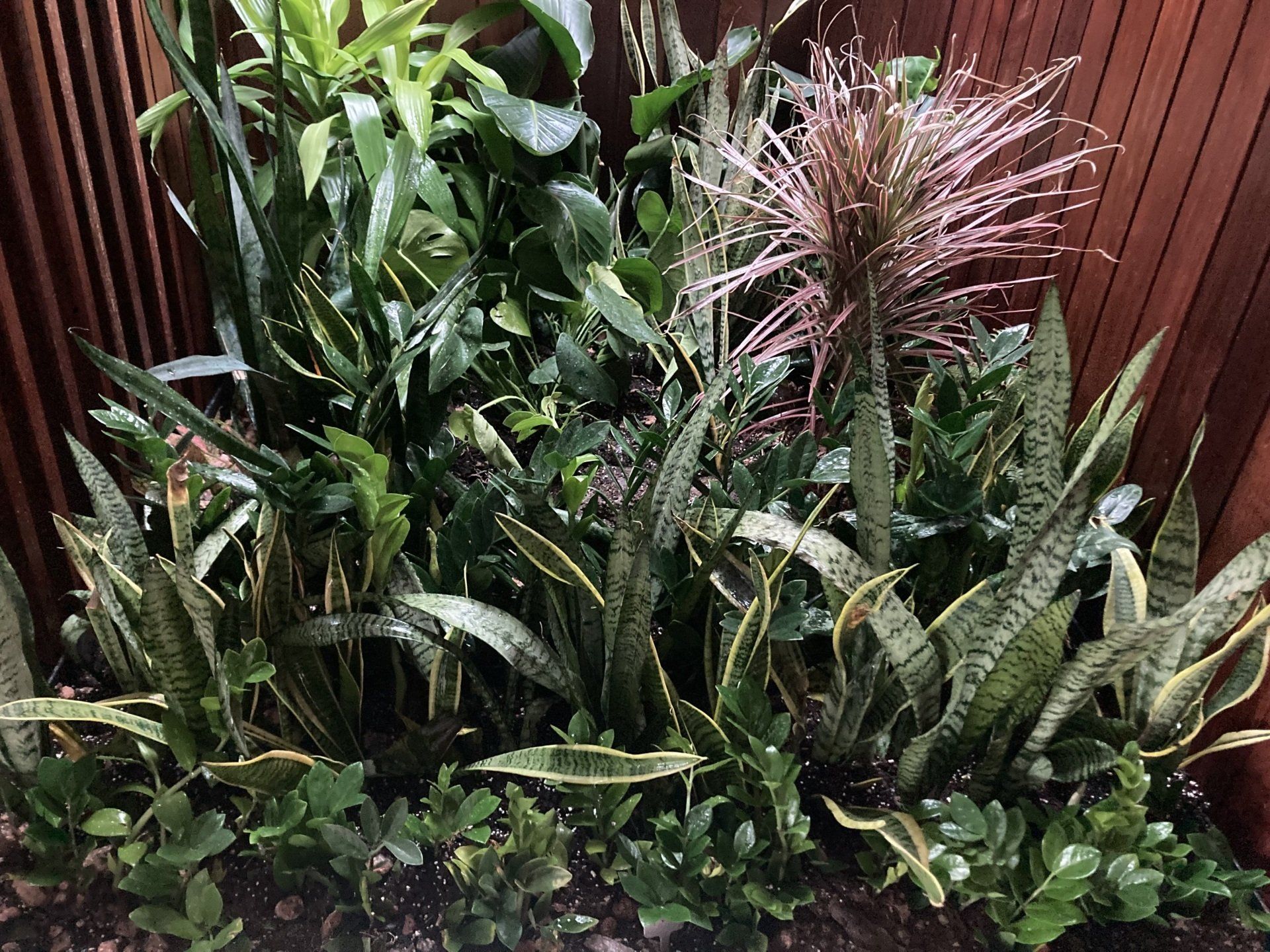
Anytime there's an installation project as large as this one there are going to be a few leaves and stalks damaged in the process. Removing these is simple: simply prune back dead growth on the plant with scissors. Mushy leaves and stalks on a plant means that it's getting too much water. Crispy leaves, yellowing, and brown spots often mean too little water.
Watering the planter takes place every 10-14 days. While the plants in the planter have slightly different watering needs, they are close and all follow the golden rule of watering: only water when the soil feels dry. Since the planter is one unified mass of soil 4x5 feet across, the whole thing gets thirsty at about the same time. This makes it quite easy to care for. We're excited to see how the planter grows!
Special thanks to:
- The clients of this project. For allowing this awesome project to happen in such a fun way.
- The Austin Plant Doctor Team. For the help across all disciplines.
- My awesome Mom. For starting me young in her garden.
- You. For reading this far. Good luck on your botanical journey! If you'd like help, contact us
